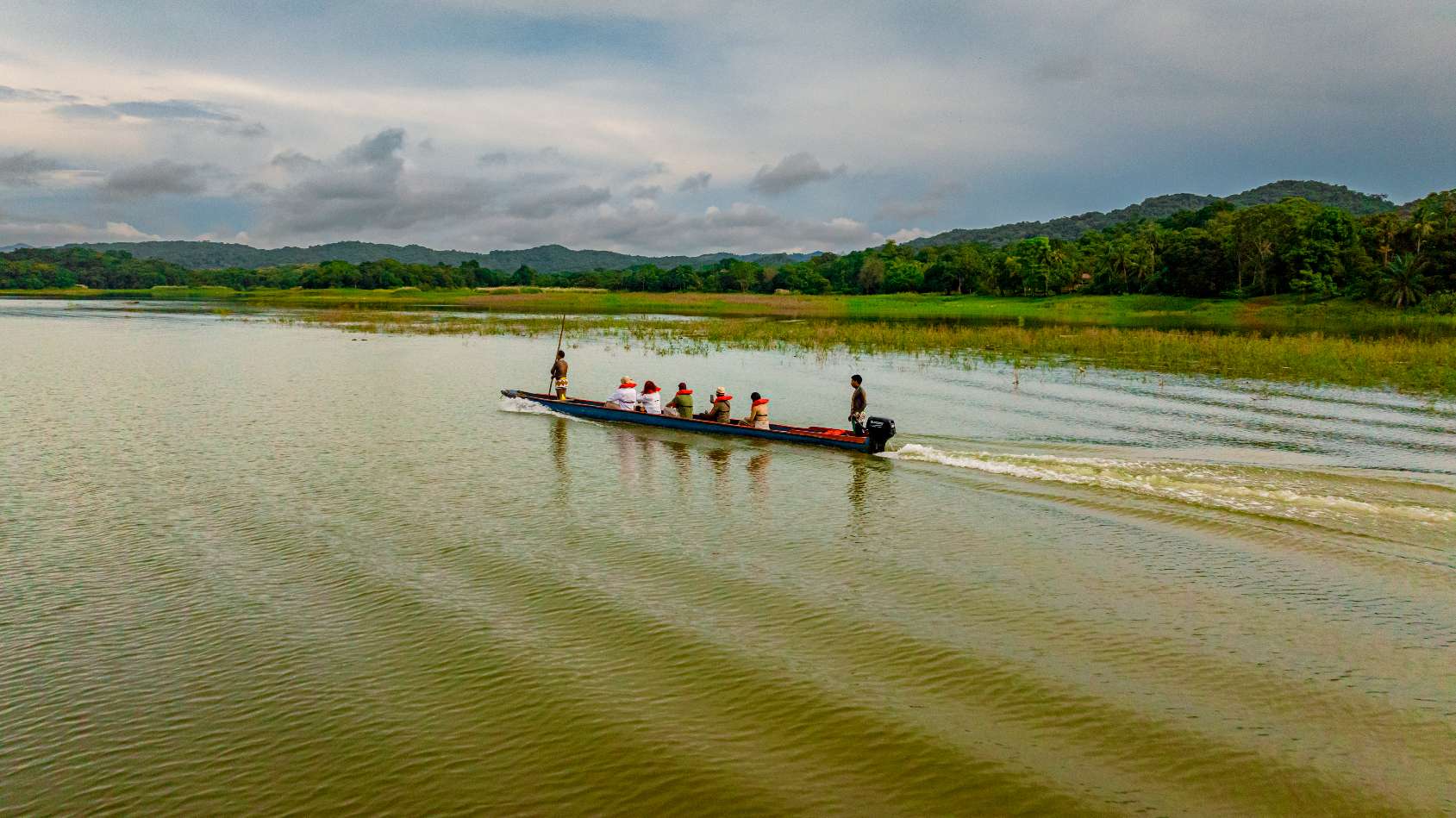Many years ago, thinking about visiting an authentic indigenous community meant having to travel to inhospitable places where many resources and complex logistics were required. Nowadays it is much faster and more accessible to have an experience with indigenous groups from Panama by being able to visit an Embera community in the heart of the Panama Canal basin.
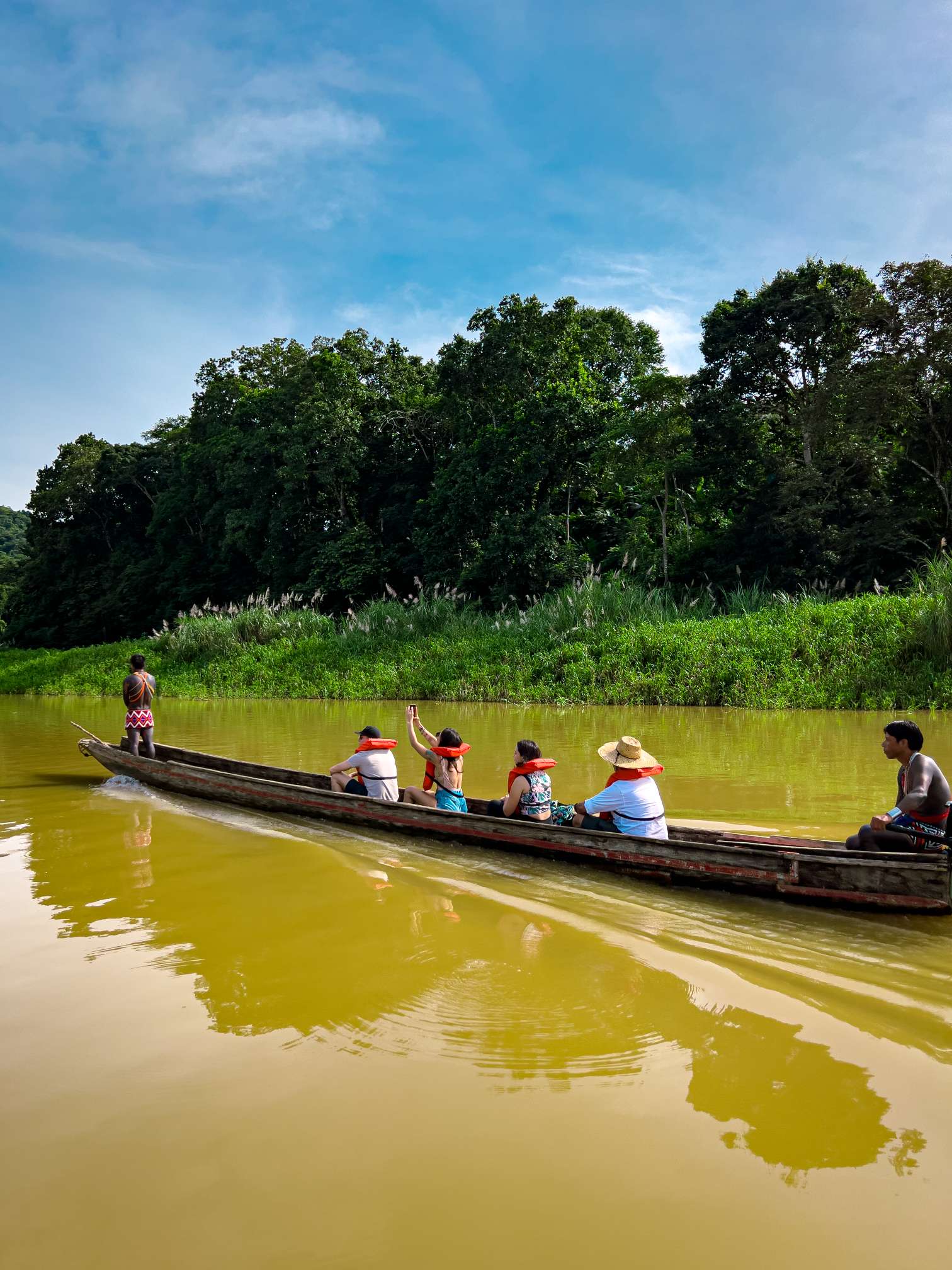
El Chagres, a River full of History and Unique Communities
Sailing along the Chagres River is to explore its colonial history when the Spanish transported enormous wealth through its waters, which at that time were the largest in the world. Today it is the enormous ships that travel through the Panama Canal that transport this wealth. However, it is also traveling in time to learn about indigenous groups that preserve their culture as unique as the Embera in the Parara Puru community.
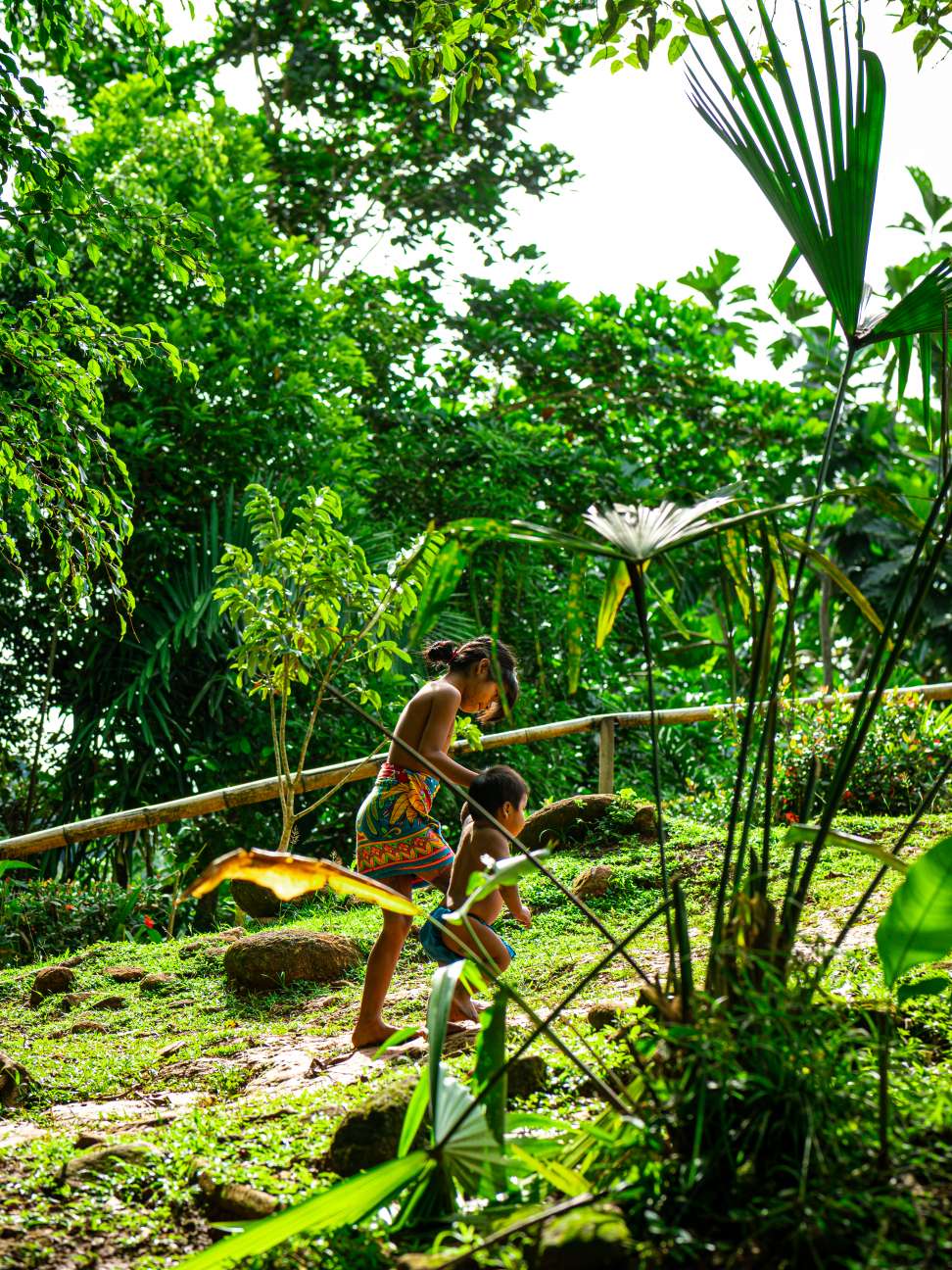
The Decision That Changed an Entire Community
In 1984, Chagres was declared a National Park, an event that would change the destiny of this community forever, since the laws for the preservation of fauna and nature in general affected several activities that made up their traditional way of life.
Although logic indicated that it was better to go to regions where it was possible to preserve 100% of their activities, this community decided to stay and offer tourists a cultural experience. Decision that tourism celebrates since otherwise, the Visitor would have had to travel to the dense Darien jungle, limiting the number of people who could get to know this indigenous group.
The Parara Puru community, is one of four located on the Chagres, is reached in a short trip by cayuco, through an organized excursion. It usually includes a visit to an island where it is possible to see howler monkeys and capuchin monkeys.
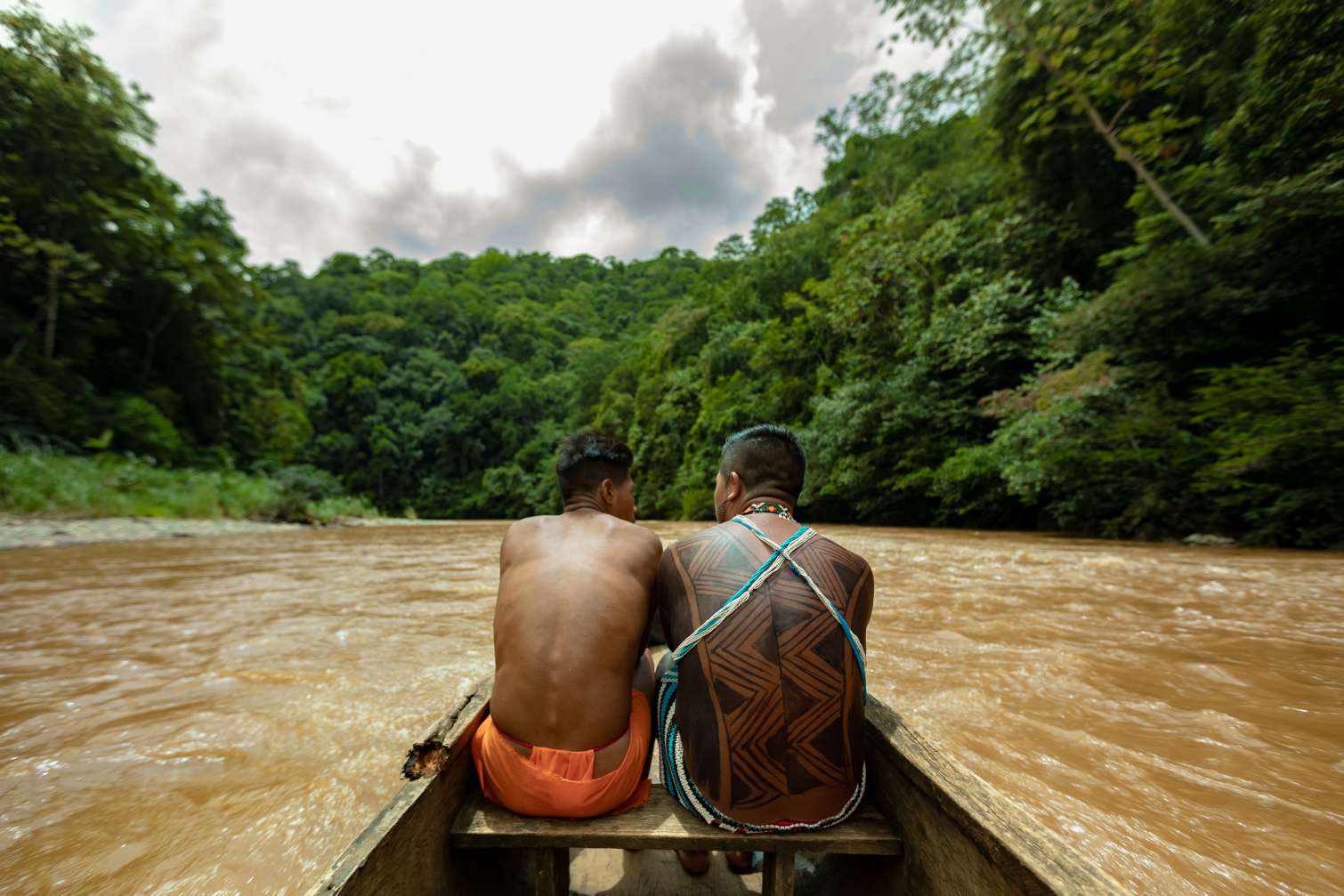
Traditional Music and Dances Welcomes Visitors
This community welcomes tourists with music using traditional musical instruments such as the chiru droma, a type of flute, the chim-bom-bom which is their percussion, the chogoro, the güiro, the chi-mpi-gui which is a tortoise shell; the requinta that is played with sticks like a drum kit, and the tonoa that marks the rhythm with which women dance the hummingbird dance, called imbisu. They also show animal dances that come from the haibanas or shamans.
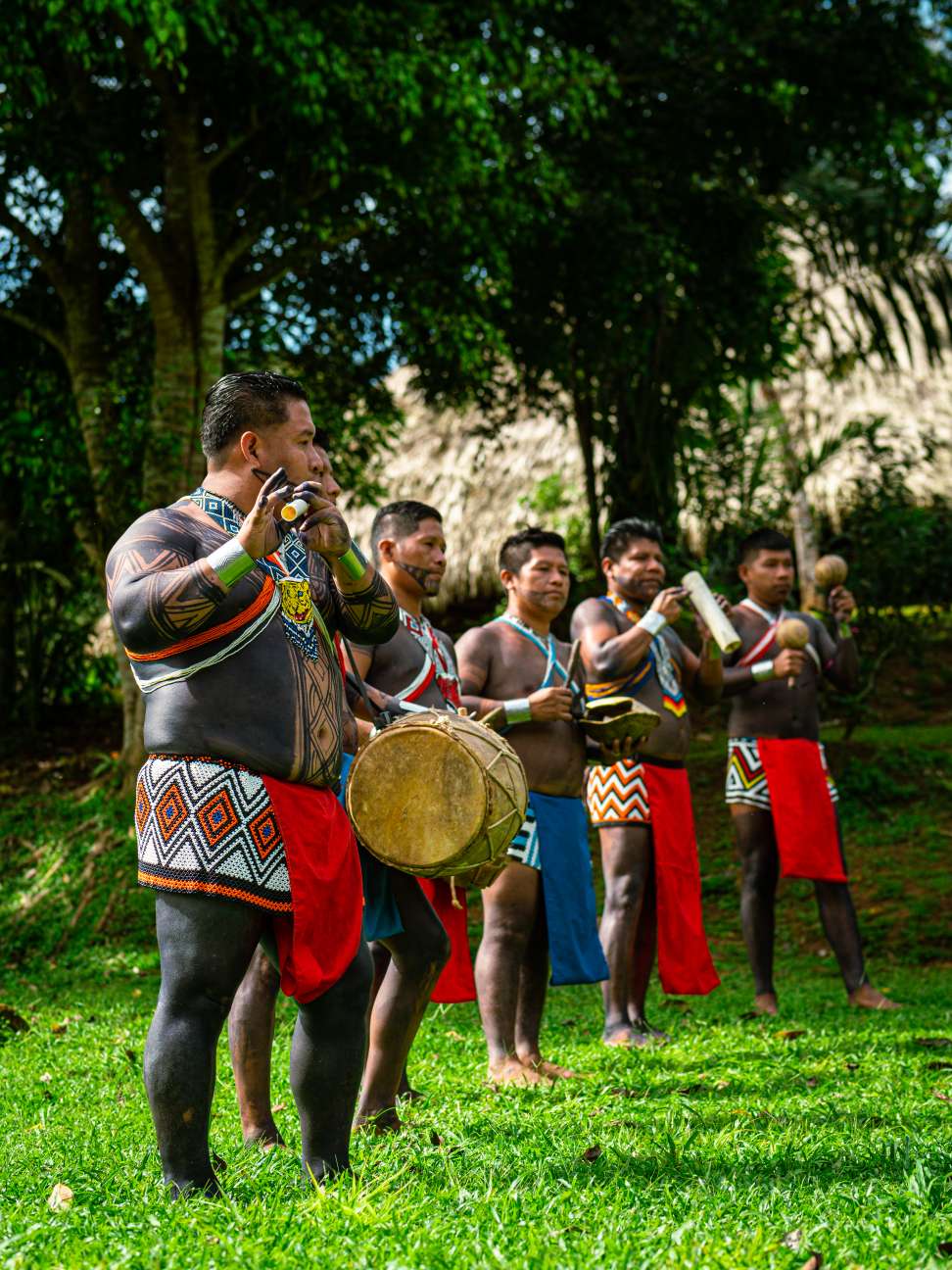
Crafts Made from Natural Resources
When visiting this Embera community, its crafts stand out, made from the multitude of natural resources they have around them. Like cocobolo, a wood that is submerged in water for years, they carve animal-shaped sculptures with it. They also use anta, the fruit of the tagua, which has two uses: when it is ripe it is edible, but over time it becomes so hard like ivory and is used to carve figures. The women weave masks, plates and baskets with chunga and naguala, two natural fibers. The naguala is harder and they use it for the structure, with the chunga they make the finishes.
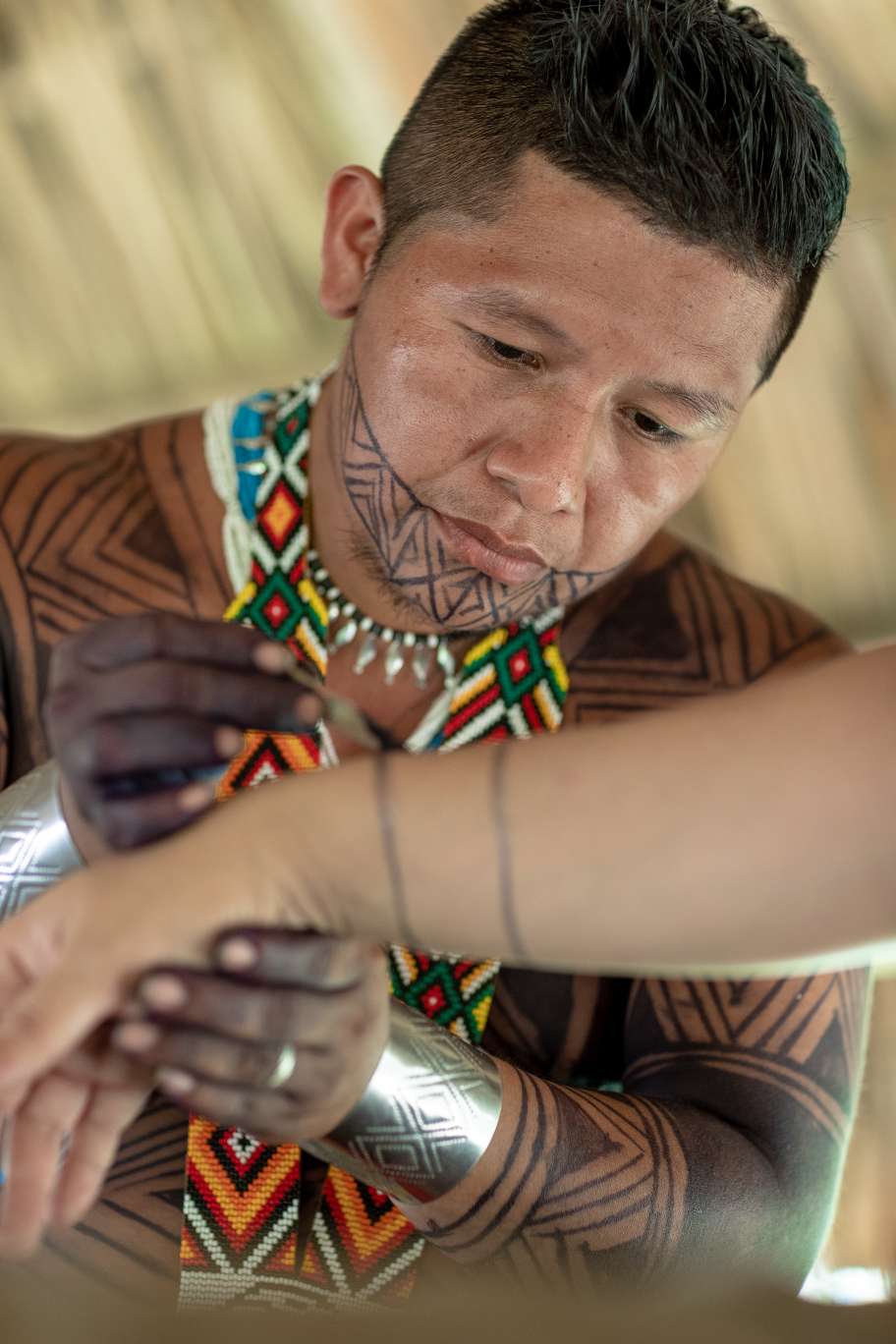
Jagua Paint, an Art that Goes Beyond Aesthetics
With the juice of the jagua (Genipa Americana), a fruit known as kípara by the Embera, they practice the art of body painting with a sense beyond the aesthetic since the jagua acts as an insect repellent and sunscreen.
Visiting this community within the Chagres National Park is an experience like few others and close to Panama City.
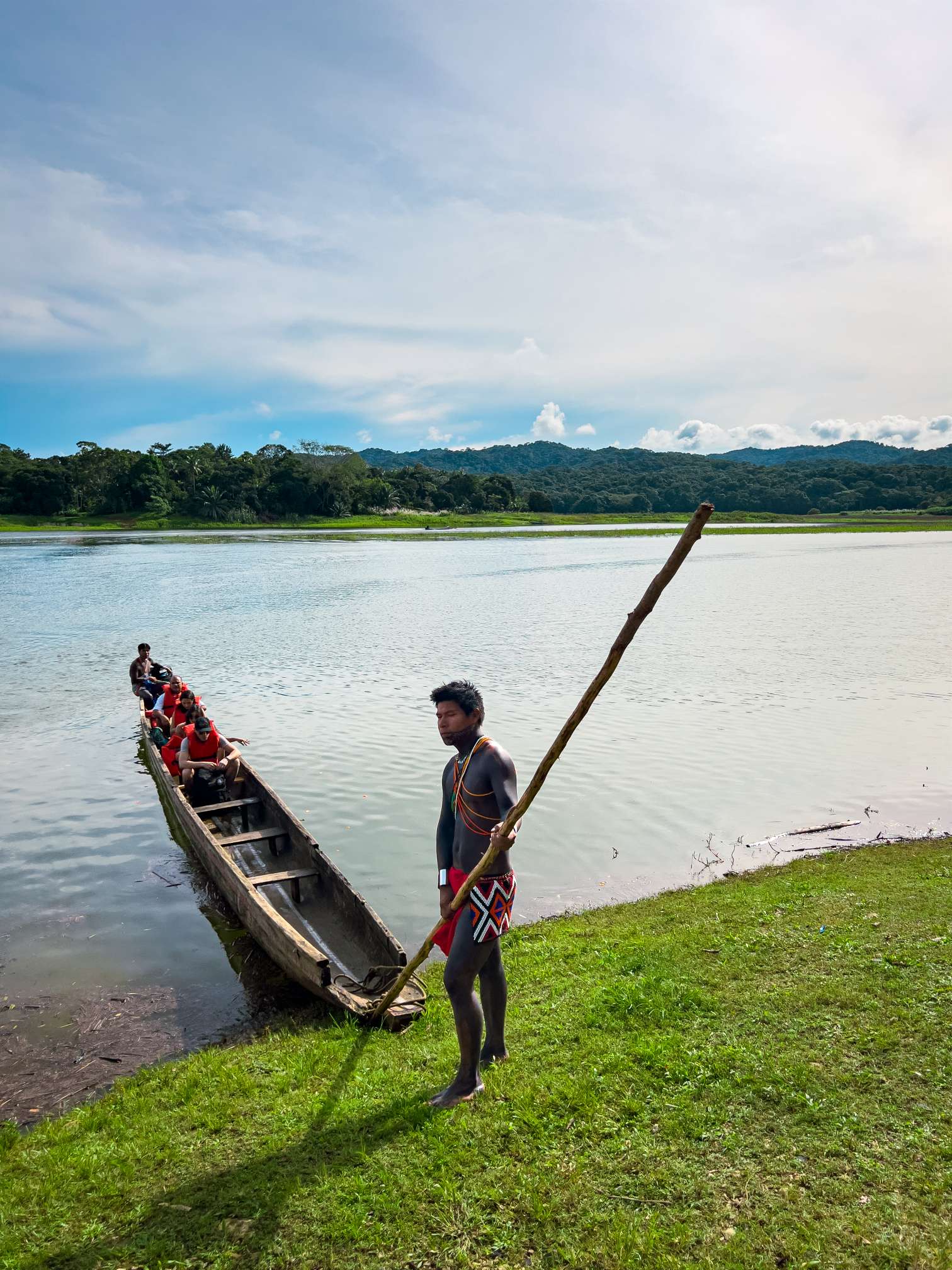
Photoa: www.visitpanama.com


